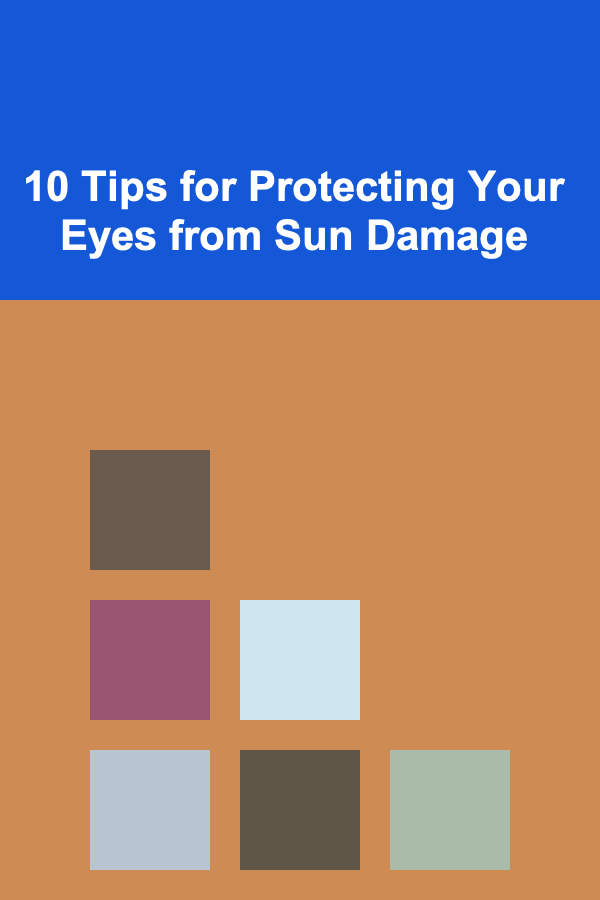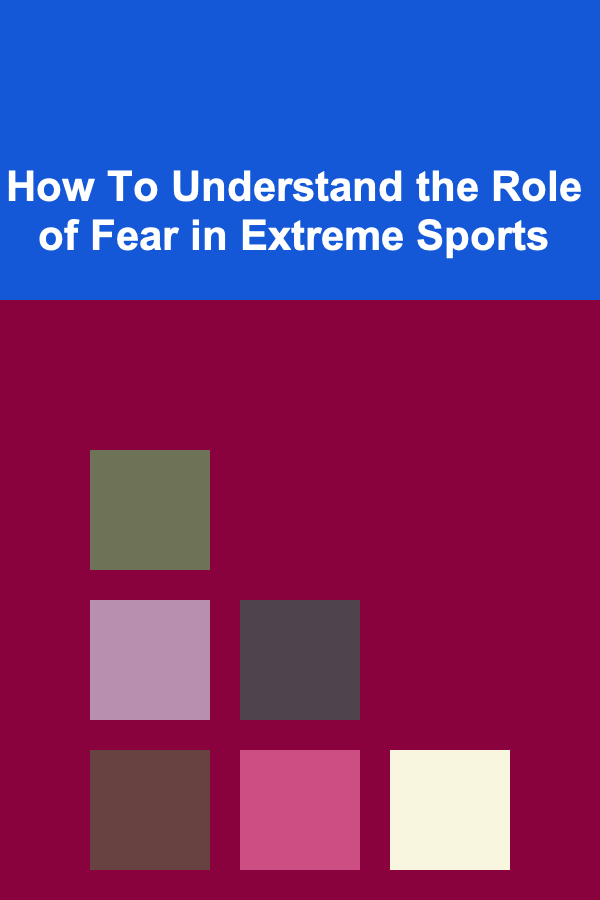
10 Tips for Protecting Your Eyes from Sun Damage
ebook include PDF & Audio bundle (Micro Guide)
$12.99$9.99
Limited Time Offer! Order within the next:
Not available at this time

The sun, while essential for life on Earth, can pose a serious threat to our eyes if proper precautions are not taken. Prolonged exposure to the sun's harmful ultraviolet (UV) rays can lead to a variety of eye conditions, from minor discomfort like dryness to more severe health issues such as cataracts, macular degeneration, and even eye cancers. In this article, we will explore ten tips for protecting your eyes from sun damage, ensuring that you safeguard your vision for the long term.
Wear Sunglasses with UV Protection
One of the most effective ways to protect your eyes from harmful UV rays is to wear sunglasses that offer 100% UV protection. Not all sunglasses are created equal---some may look stylish but fail to block UV radiation effectively. When choosing sunglasses, look for labels that state "UV400" or "100% UV protection," which ensures that the lenses block both UVA and UVB rays.
Why UV Protection Matters
UV rays can cause serious damage to the delicate tissues in and around your eyes. Over time, exposure to UV light can lead to conditions like cataracts, retinal damage, and even skin cancer around the eyes. Therefore, selecting the right sunglasses is crucial to maintaining healthy eyes.
Choose the Right Lens Color and Material
While UV protection is the most critical feature of sunglasses, the color and material of the lenses also play a role in how well they protect your eyes. Lenses with a gray or brown tint can reduce glare and improve contrast, making them particularly useful for outdoor activities. Polarized lenses can help reduce reflections from surfaces like water or roads, providing clearer vision and less eye strain.
Lens Materials
Polycarbonate lenses are a great choice for sunglasses because they are lightweight, durable, and naturally UV resistant. They also provide added protection from impact, making them ideal for sports or outdoor adventures.
Wear a Wide-Brimmed Hat
A wide-brimmed hat can significantly reduce your exposure to the sun's rays, providing shade for your face and eyes. A hat with a brim of at least three inches can block sunlight from hitting your eyes directly, even when you're not wearing sunglasses. It can also help reduce the overall amount of UV radiation that reaches your skin, protecting both your eyes and your face from sun damage.
Additional Benefits of Wearing a Hat
In addition to protecting your eyes, wearing a wide-brimmed hat also helps reduce the risk of skin cancers such as melanoma, which can develop on the eyelids or around the eyes due to excessive sun exposure.
Seek Shade During Peak Sun Hours
The sun's rays are strongest between 10 a.m. and 4 p.m. During these hours, UV radiation is at its highest, making it essential to take extra precautions. If possible, try to limit your outdoor activities during this time. When you do venture outside, seek shade whenever you can. Staying under trees, umbrellas, or canopies can provide significant protection from direct sunlight.
Why Timing Matters
UV rays can still cause damage even when it feels cloudy or cooler outside. Remember that up to 80% of UV rays can reach your eyes on overcast days, so it's always a good idea to protect them, no matter the weather.
Apply Sunscreen Around Your Eyes
The skin around your eyes is delicate and more prone to sunburn, making it essential to apply sunscreen to this area. Use a sunscreen that is specifically designed for the face and around the eyes, ensuring it is gentle and won't irritate your skin. Look for a sunscreen with a high SPF (at least 30) and broad-spectrum protection against both UVA and UVB rays.
Tips for Application
Be careful not to get sunscreen directly in your eyes. Apply a thin layer around the eye area, especially on the eyelids and under the eyes, and reapply regularly, especially if you are sweating or swimming.
Use UV-Blocking Window Films
When driving or spending time in a car, the UV rays can still reach your eyes through the windows, especially when driving for long periods. Applying UV-blocking window films to your vehicle's windows can help reduce the amount of UV radiation that enters through the glass. This will help protect your eyes during commutes or road trips.
The Importance of UV Window Films
Standard car windows may only block a small percentage of UV rays, but with UV-blocking window films, you can block up to 99% of harmful radiation, providing more comprehensive protection for both your eyes and skin.
Get Regular Eye Check-Ups
Regular eye check-ups are crucial for detecting early signs of sun damage. An eye doctor can evaluate the health of your eyes and provide advice on how to protect them from future damage. Conditions such as cataracts, macular degeneration, and pterygium (a growth on the eye) can be detected and monitored more effectively through routine eye exams.
Preventive Care and Early Detection
Routine eye exams allow for early intervention if sun damage or other eye problems are detected. Early treatment can prevent further complications and help preserve your vision for the long term.
Monitor Your Exposure in Reflective Environments
Reflective surfaces, such as water, snow, or sand, can amplify the intensity of UV rays, increasing the risk of eye damage. For example, snow can reflect up to 80% of UV rays, which can be harmful to your eyes, especially when skiing or snowboarding. When in these environments, make sure to wear sunglasses with full UV protection and, if applicable, snow goggles that provide additional shielding.
How Reflective Surfaces Increase UV Exposure
When light reflects off surfaces like water or snow, the intensity of UV radiation increases, making it more likely for harmful rays to reach your eyes. It's important to take extra precautions, such as wearing sunglasses or goggles, to shield your eyes from the increased exposure.
Be Mindful of Eye Strain and Overexposure
In addition to UV damage, prolonged exposure to bright light can cause eye strain and fatigue. If you're spending long periods outdoors, especially on bright days, make sure to take breaks and give your eyes a rest. Avoid staring directly at the sun or bright lights for prolonged periods, as this can lead to temporary discomfort and even permanent damage, such as solar retinopathy.
Tips to Reduce Eye Strain
- Wear sunglasses to block out the intense light.
- Take regular breaks by going indoors or seeking shade.
- Use artificial tears if your eyes feel dry or irritated from sun exposure.
Educate Yourself and Others on Eye Protection
Awareness is key when it comes to eye health. Many people are unaware of the risks associated with sun exposure and how it can lead to permanent damage. By educating yourself about the importance of protecting your eyes and sharing this knowledge with others, you can help prevent future eye problems.
How Education Can Help
Raising awareness about the dangers of sun exposure and the importance of eye protection can encourage others to take precautions, reducing the overall risk of eye diseases and maintaining better vision for the future.
Conclusion
Protecting your eyes from sun damage is essential for maintaining good eye health and preventing long-term vision problems. By incorporating these ten tips---such as wearing sunglasses with UV protection, using sunscreen, seeking shade during peak sun hours, and getting regular eye exams---you can significantly reduce your risk of sun-related eye damage. Remember, your eyes are delicate, and taking simple steps to protect them today can ensure that you continue to enjoy clear, healthy vision for many years to come.

How to Keep Your Garage Organized with Creative Storage Ideas
Read More
How to Soundproof Your Kitchen and Dining Area for Peaceful Meals
Read More
How to Stage Your Home's Kitchen for a Modern Look
Read More
How To Understand the Role of Fear in Extreme Sports
Read More
How to Navigate Climate Anxiety and Eco-Grief
Read More
10 Apps and Websites for Solving Sudoku Puzzles
Read MoreOther Products

How to Keep Your Garage Organized with Creative Storage Ideas
Read More
How to Soundproof Your Kitchen and Dining Area for Peaceful Meals
Read More
How to Stage Your Home's Kitchen for a Modern Look
Read More
How To Understand the Role of Fear in Extreme Sports
Read More
How to Navigate Climate Anxiety and Eco-Grief
Read More